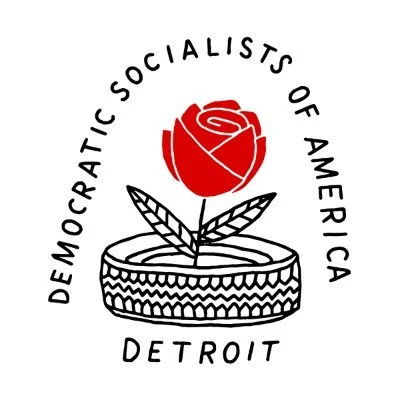

Socialist in Office: Training New Socialist Organizers in Dylan Wegela’s District
By Anthony D., Diane R., Ashley H., Dave N.

Compared to liberals and progressives, socialists have a unique perspective about the purpose of electoral politics and winning elected office. We understand that the mass social change we want cannot be accomplished unless millions of ordinary people are moved to fight for their own liberation in the class war against bosses and billionaires. To that end, the socialists we elect have a historic role to play in bringing this about by operating primarily as organizers who bring workers into the struggle alongside them.
Within the modern left, most electoral endorsements have been viewed strictly as a commitment to support candidates throughout their campaign: to fundraise, build up their communications infrastructure, and develop a field program to knock thousands of doors and talk to voters. If our endorsed candidates win, the level of support we offered during the campaign immediately drops off after Election Day and we move on to the next campaign. Very rarely, if ever, do we devise a plan during the endorsement process for how they will operate once in office and what they should prioritize. We send them off on their own into completely hostile legislatures designed and controlled by two political parties completely beholden to capital and hope that they alone can beg and bargain for reforms on behalf of the working class.
Over the last half century this individualistic approach has ultimately been unsuccessful in winning gains for the working class or in getting our class organized to fight. As DSA becomes more adept at winning elections in the vacuum created by a pro-genocide Democratic Party, our modern task as socialists is to think of Election Day as a checkpoint rather than as the finish line. In practice, this means orienting our endorsed candidates and elected officials towards the primary goals of making more socialists, building socialist organization, and leading as spokespersons of our independent party.
At the 2023 Metro Detroit DSA Membership Convention, our chapter’s highest decision-making body, members voted to take the first steps in this direction by launching the Socialists in Office Committee (SIOC) as a body in which elected chapter leadership would coordinate our organizing work with our endorsed elected officials, also known as Socialists in Office (SIOs). The resolution and amendment we passed called for an organizing-focused purpose and vision for the SIOC that prioritized creating our own party-like infrastructure so we could recruit and train socialist candidates from within our own ranks, who would think of themselves primarily as organizers of the working class, rather than purely as legislators. It was also a move towards building a working-class movement outside of electoral work by using our SIOs’ offices to reach, educate, and organize their constituents into class struggle and self-activity. Unfortunately, very little has been done to see this through since then.
At our 2025 Convention, members passed an amendment to the SIO Committee consensus resolution that created a unique and experimental ‘Geographic Working Group’ as a space for rank-and-file DSA members residing within State Representative Dylan Wegela and Congresswoman Rashida Tlaib’s overlapping districts to regularly meet with and organize alongside them. Our SIOs are surrounded on a daily basis by politicians ranging from corporate Democrats to fascist Republicans who serve the same ruling class, so we imagined this group as the socialist antidote and support system. The idea was to experiment with a new concept of how to operate in office and carve a path towards our political independence. The amendment included the clause below, which initiated both this article and a verbal summary of it given by group members at the December 2025 General Meeting.
The Geographic Working Group will issue a report at both the six month (December 2025) and twelve month (June 2026) mark to:
- provide an update on progress towards our goals and explain any roadblocks to accomplishing them
- offer an analysis and critique to consider whether it should be replicated by future similar bodies or other SIO Committees around the country
- normalize open reporting on the progress of this and other unique experiments in the chapter — all of which can be expected to have misses and fails, which are acceptable so long as the lessons learned are defined and shared with membership similar to past electoral campaigns
Since Dylan Wegela was endorsed by the chapter while in office in 2024, he has been requesting help to launch bottom-up organizing projects in his district with support from Metro Detroit DSA members. Calling back to his experience of leading rank-and-file Arizona public school teachers in a statewide strike in 2018, this approach is meant to bring his constituents into permanent mobilization beyond a typical re-election campaign cycle. The idea was to put them in touch with socialist organizers and strategy, building towards a long-lasting base for socialist politics and worker self-organization in his district. Because of his limited staff capacity, this vision needed help from DSA members.
Dylan’s predominantly working class district (Garden City, Westland, Inkster, Romulus) is geographically distant from the main concentration of where chapter members live and is a 30–40-minute drive from Detroit and Hamtramck, the city where we hold our monthly General Meetings. In 2022, when the Electoral Committee declined to move Dylan’s endorsement request forward, to instead focus on Rashida, one of the main reasons was that just five dues-paying members lived in his district. Since membership bumps in response to both Trump’s re-election and Zohran’s primary win as well as intentional recruitment by both Dylan and this group, there are now 40 dues-paying members in his district.
We believed that if we did the work to create a regular, local, in-person meeting space within Dylan’s district and conducted careful outreach and onboarding, that many of the new members in the district would be more likely to show up and organize with a group located closer to them. Texting through the list of members in Dylan’s district produced around 10–15 onboarding calls. Almost everyone we talked to expressed some amount of demoralization over Trump’s reelection and a desire to build more local connections with socialists. Many felt compelled to finally get active because of Zohran’s primary victory in June. Throughout our meetings, we’ve also heard:
- Folks have been more likely to participate in DSA through this group since it’s very close to them and they get to meet their socialist neighbors. The group offers DSA members a way to connect with their neighbors and talk about shared concerns. The smaller group setting has been an easier way to interact with each other and start to build community and social connections.
- Folks have come into DSA already socialist-leaning and gone to their first DSA meeting but were overwhelmed with how much was going on. This group felt like an easier point of engagement with DSA.
- The group has felt like a welcoming space for DSA members to bring their friends and significant others.
As of the December 2025 General Meeting, the group has met eight times with an average attendance of around 12 people, usually composed of DSA members, non-DSA members brought along by members, and constituents that Dylan recruits through door-knocking, social media, or coffee hours. We meet in person every two weeks, and the Signal group chat that people are invited to after attending a meeting is at 33 members. Only six of those members had participated in DSA prior to joining this group and three people have been moved to join DSA through participation in it. Dylan joins every meeting, calling the group “a refreshing reminder that none of us are in the struggle alone,” and says, “We’re seeking to answer an essential question for our movement: Now that we hold office, how do we use it to organize the working class and grow our mass movement?”
The group’s meetings run for two hours and start with someone reiterating our political purpose (Dylan and Rashida need a mass movement behind them and this group can help develop socialist organizers and potential future socialist candidates to make that happen) and experimental concept (this is how SIOs should use their elected office). Each attendee then introduces themselves and shares why they’re a socialist or what brought them to the meeting, followed by a 30-minute political discussion based on a reading (distributed in advance) on basic socialist theory, organizational democracy, or electoral organizing strategy. These political discussions are based around easy-to-read, short Jacobin articles and have acted as a way to onboard new members and non-members alike who are new to socialism and organizing. They’ve also allowed us to talk about the broader goals of socialist organizing and our theory of social change beyond just supporting our SIOs.
We spend the rest of our meetings working on organizing plans, as a means to develop group members who have never organized into experienced leaders. Our projects are in various stages and led by different members:
- Collected signatures for the Michigan For The Many campaign, the three chapter-endorsed statewide ballot initiatives, including at the October No Kings rally in Livonia and the November Santa Land parade in Westland. Notably, none of the nonprofits leading the ballot initiatives had established a presence in this area. Signature collection at events has been used as a conversation opener to talk to people about socialism and DSA, give them one of our DSA palm cards, and try to recruit to our group.
- Started power mapping of Dylan’s district so we can learn about local political dynamics, as a counter to the typical “insider politics” preferred by establishment political operatives.
- Launched a public donation drive in response to the government shutdown and SNAP benefit suspension, to funnel donations to local food pantries.
- Planned a group budget for the year to fund food, drinks, and a private meeting space. The budget allows more transparency to the chapter for our plans and helped us to deliberate on our priorities, like meeting in person, every two weeks, at a quiet, private space with plenty of room to expand, and offering food to entice more folks to attend.
- Organizing tenants at a 300-unit apartment complex in Inkster. This was initiated by Dylan, with a town hall attended by 50 tenants, after he learned many of them were living in really bad conditions and did outreach to the whole building by mailing them surveys about it paid for with office funds. Organizing is temporarily on hold, due to political dynamics with Inkster City Council members who collaborated with Dylan on the event. They preferred to wait until the spring to do an outdoor community engagement event before building the tenant organizing group.
- Building towards a public event led by Dylan, Rashida, and Westland/Wayne and Dearborn teachers as a way to facilitate communication among multiple teacher unions and help DSA members in those unions to organize with their coworkers. SIOs, public school teachers, and local DSA members organizing together are some of the key components towards the long-term goal of establishing a local socialist political machine.
Group members have shared responsibilities for running the meetings, with some members facilitating our political discussion by preparing discussion questions beforehand and others taking turns to take notes and chair. Distributing the work teaches through experience, including experience in making group democratic decisions.
Diane, from Romulus, says the group is “investing our time and efforts directly in the communities we live in, building our grassroots movement while building our DSA chapter as a whole.” In October, Diane spent 19 days in the hospital. “This group stepped up to support me in my recovery, creating a GoFundMe. This is community in action,” said Diane, adding, “Being a part of this group made me see how change can take place in my own community and I have discovered my own voice in creating the changes I hope to see.”
We plan to continue expanding this group as a training ground to create more socialist organizers in an area where our chapter has not previously had an established presence. For workers to take over and transform society, we need to be everywhere we can to produce more organizers and force the hand of capital in legislatures and workplaces. Socialist organizers developed through this group can confidently go out into their neighborhoods, unions, and workplaces and lead other workers.
Socialist in Office: Training New Socialist Organizers in Dylan Wegela’s District was originally published in The Detroit Socialist on Medium, where people are continuing the conversation by highlighting and responding to this story.
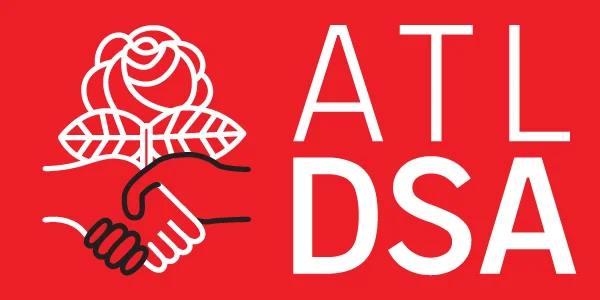

Atlanta DSA endorses Gabriel Sanchez for State House
Atlanta DSA is proud to once again endorse our comrade Gabriel Sanchez for re-election to the Georgia State House, representing District 42.
In 2024, we made history by electing Representative Sanchez, the first Democratic Socialist in Georgia’s State House, on a platform of housing, healthcare, and an economy that works for all of us. Now, he’s running for re-election in 2026 to continue to fight for working families, stand up to fascism, and build a better Georgia for all. Atlanta DSA is thrilled to back our comrade once again.
Gabriel has been an active member of Atlanta DSA since 2019 and has spent years supporting striking workers on picket lines, organizing to Stop Cop City, campaigning for abortion rights, and advocating for a Free Palestine. During his first term, Gabriel continued fighting for working Georgians in the State House with support from a staff made up of DSA members. He introduced bills to raise the minimum wage to $20 and end corporate ownership of Georgia homes, voted to eliminate subminimum wages for disabled workers and against tax cuts for the wealthy, and authored and held a hearing for a bill to end rental price fixing via AI software. Gabriel also brought his many years of experience as a community organizer into his first term. Over the past year, he has hosted in-district mutual aid events in partnership with Atlanta DSA, as well as town halls and meet and greets to speak directly with residents about the pressing issues they’re facing right now. Our chapter is extremely proud of the work Representative Sanchez has done, and we look forward to continuing to build a Georgia for all alongside him.
As a proud Democratic Socialist, Gabriel is refusing money from corporations or their PACs. Just like last time, we’re running a grassroots campaign of, by, and for working people, and we need your help to win this election. Donate now at SanchezForGeorgia.com
In the lead-up to the 2024 election, Atlanta DSA knocked thousands of doors in District 42 to talk directly to voters about Gabriel’s campaign for housing, healthcare, and an economy for all. We’re planning to do the same next year. Sign up now to volunteer with our campaign at atldsa.org/Volunteer4Gabriel and stay tuned for info about a kickoff canvass in the new year. Let’s re-elect Representative Gabriel Sanchez! 


GRDSA for the Many – We support money out of politics, funding education, and rank choice voting!
There are several ballot initiatives circulating petitions this cycle. The members of the GRDSA are proud to endorse Invest in MI Kids, MOP Up Michigan, and Rank MI Vote. If successful, these initiatives would mean real change for Michiganders.
We are circulating petitions! Our goal is to contribute 1,000 collected signatures for the Invest in MI Kids and MOP Up Michigan campaigns. If you are interested in volunteering, please fill out this form.

Invest in MI Kids – investinmikids.org
We support this ballot initiative because every student deserves access to excellent public education. This excellence requires proper facilities, educational material, and well-paid teachers. To fund these vital elements of education, this initiative would create a 5% fair share surcharge on income over $500K ($1M filing jointly) to be deposited in the State School Aid Fund. It will also add a requirement that money from the School Aid Fund be spent exclusively on local school districts.
MOP Up Michigan – mopupmichigan.org
MOP = Money Out of Politics
We deserve fair utilities, a clean environment, and honest elections. But as our bills continue to grow, utility companies use political contributions to avoid accountability and slow down reform. This ballot initiative would reign in corporate control of government by prohibiting companies with over $250,000 in government contracts from making campaign contributions. Additionally, the initiative introduces finance laws which would require donor information to be made more clear in political communications.
Rank MI Vote – rankmivote.org
NOTE: The Rank MI Vote campaign has suspended signature gathering for their 2026 statewide campaign.
We believe every voter should feel comfortable voting for their best option, rather than the better of two bad options. Rank choice voting is an alternative voting system where the voter ranks up to five candidates for each office, as opposed to picking one option. This allows the voter to rank their favorite candidate first, even if they aren’t likely to win, before ranking their second, third, etc. Voters may still vote for just one candidate or leave that office/section blank. If the votes are tallied and no candidate has enough votes to win, candidates with less votes are eliminated and back up choices are used until one candidate wins.
Dishonorable Mention
There are a few bad petitions circulating as well. There are some that would require IDs to vote and one to cut taxes, Ax MI Tax. Decline to sign these regressive initiatives.
The post GRDSA for the Many – We support money out of politics, funding education, and rank choice voting! appeared first on Grand Rapids Democratic Socialists of America.


The Vermont Socialist (12/7/25): The belated November edition
Happy belated Thanksgiving, and apologies for the tardy newsletter. Remember that it’s now flu season, so make sure that your immunizations are up to date (or you too might fall behind on your work!).
The legislative season is around the corner, and legislators are dealing with the fallout from federal budget cuts, with which come an intensification of the ever-present calls for austerity. This year, some of our most vulnerable friends and neighbors were thrown on the street and left without food. GMDSA believes not just that everyone deserves housing and food, but that the money exists — what we need is the political will. That’s why GMDSA’s second annual convention voted to make Tax the Rich our priority campaign for 2026.
Our members also voted on a new slate of officers and committee chairs. Congratulations in particular to Will Fritch, our new East Branch Co-Chair, and Nana Brownell, who will be returning to that same role for West Branch.
Upcoming Events
GMDSA is sponsoring “For Ukrainian Self-Determination: Building International Working Class Solidarity,” featuring our very own Sen. Tanya Vyhovsky and Traven Leyshon. Discussion begins December 15th at 5pm at Migrant Justice (179 S. Winooski Ave., Burlington) .
Talk about your job and learn about shop-floor organizing from peers at Workers' Circle (co-hosted by the Green Mountain IWW) on the second and fourth Wednesdays of each month. The next one is at 6pm and is also at Migrant Justice on December 10th.
GMDSA Meetings
Labor Committee meets December 8 at 6pm
Membership Committee meets December 8 at 7pm
Electoral Committee meets December 9 at 6pm
Communications Committee meets December
General Meeting on December 20th (details TBA; check our calendar)
TState News
Burlington’s democratic, member-run, GMDSA-sponsored cinema is now open for business. Congrats to Partizanfilm on its successful opening!
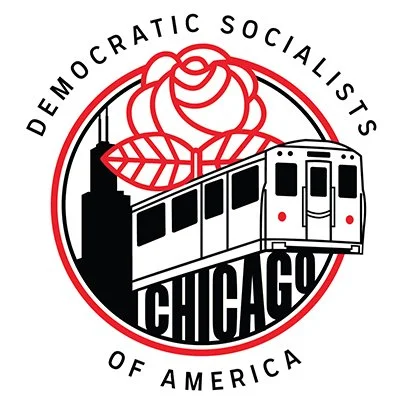

Grassroots Red-Greens
World leaders continue to show the necessity for the development of ecosocialism at the local level. Faced with capitalist ecocide, ecosocialism demands ecological balance. As noted by Anti*Capitalist Resistance, environmental issues are not luxury concerns, because the same people polluting the planet are the people oppressing the working class. The fight against capitalism’s waste and inequity must begin locally and spread internationally.
One example of an international shortcoming is the November 2025 United Nations Climate Change Conference (also known as COP30, the 30th meeting of the Conference of the Parties, in Belém, Brazil) ending without an agreement on phasing out fossil fuels. This is not surprising, considering COP30 had around 1,600 attendees who were fossil fuel lobbyists, outnumbering every national delegation other than Brazil. This is in addition to the voices of petrostate attendees like Russia and Saudi Arabia and the absence of the United States, one of the world’s largest emitters of greenhouse gas, which did not send a delegation. A group of U.S. leaders did attend in an unofficial capacity, however, and they discussed how U.S. cities and states are addressing the climate crisis.
Although absent from COP30 and with leadership that increasingly rejects climate science, the U.S. is experiencing the devastating effects of climate change. Across all regions of the United States, people are experiencing warming temperatures and extreme weather conditions, including flooding, wildfires, and hurricanes. Low-income areas and communities of color disproportionately feel these effects.
But there are economic costs, too, as the first half of 2025 was the costliest on record for major disasters in the U.S., totaling over $100 billion. The United States will continue to face direct and compounding challenges as average surface temperatures continue to rise.
For the above reasons and many others, the journey to national (and, eventually, worldwide) ecosocialism must begin locally. Localities, particularly cities like Chicago, have the potential to successfully implement ecosocialist goals. These goals include efficient and universally accessible public transportation, local food sovereignty, and the elimination of fossil fuels.
The work the Fix the CTA campaign has been doing will strengthen Chicago’s public transportation system. If Zohran Mamdani achieves his goal of free public buses in New York City, such an accomplishment can serve as a model for Chicago and other municipalities. New York City’s congestion pricing should also be a model for municipalities, as the corollary for free and efficient public transportation is the reduction of private vehicles.
Despite inequities and reliance on multinational corporations, Chicago can accomplish local food sovereignty through, among other things, greater support for local growers and kitchens.
New York’s Build Public Renewables Act, which authorizes state-owned clean energy projects, is an example of favorable decarbonization that resulted from years of organizing by DSA. Although New York is unique in that it has the nation’s largest public energy provider, passage of the Build Public Renewables Act shows that grassroots organizing works. People in every jurisdiction can organize for clean energy sources like solar power.
On a daily basis, people in every jurisdiction can recycle and use other sustainability efforts to minimize our own ecological footprint. Reusing items also serves the dual purpose of minimizing the flow of money from corporations to dangerous regimes.
Of course, the final boss of ecosocialism is capitalism as a whole. Ecological balance is inconsistent with capitalism’s profit maximization that commodifies both people and nature. In that vein, ecosocialism requires a widespread and revolutionary social transformation and collectivization of the means of production. But the roots for ecosocialism are planted at home.
The post Grassroots Red-Greens appeared first on Midwest Socialist.
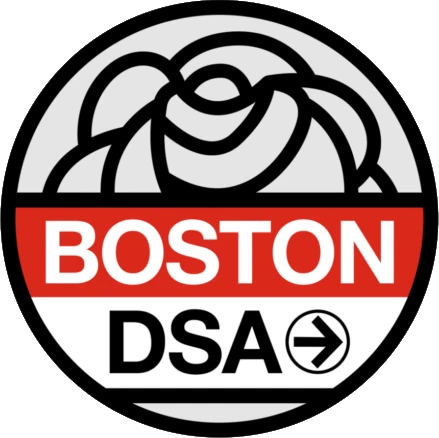

The Starbucks Strike and the Long Memory of the Kitchen

[[{“value”:”

By: Carlos B
The modern figure of the chef did not begin in a luxury dining room. It began in the barracks, in hunger, in political upheaval. Marie-Antoine Carême—the man later called the “King of Chefs and Chef of Kings”—was born in 1784 to an unemployed laborer on the outskirts of Paris. He was one of eight children. His father, overwhelmed by poverty as the French Revolution unfolded, took him in the city at the age of ten with a single instruction: find work and survive.
Carême did. He washed dishes, swept floors, and cooked in exchange for food for his 8 brothers. He was a worker before he was an artist. He lived in the same uncertainty as the masons and stonecutters who built Paris. From them he absorbed a way of seeing structure, symmetry, order. And in the heat of revolutionary France, surrounded by ruins and construction sites, he began shaping pastry as if it were stone—edible monuments that echoed the geometric clarity of the nation’s new architecture.
His pièces montées—towering sculptures of sugar, dough, and caramel—borrowed from the building language that would later inspire Le Corbusier and the architects that remade modern France. Carême believed that architecture and cuisine were parallel disciplines: both required discipline, engineering, creativity, and respect for labor. He designed not only dishes, but the first chef’s jacket—white, double-breasted, practical, proudly worn by cooks to this day. A uniform built for workers.
Nearly a century later, during the upheavals of the 1930s, another chapter of kitchen history unfolded—not in Paris, but in Minneapolis. The Great Depression crushed wages and pushed millions toward starvation. In 1934, as the city’s Teamsters strike escalated, workers built a commissary to feed thousands of strikers, supporters, and families. It was not a restaurant. It was a lifeline: a kitchen to keep people warm, sheltered, nourished, and alive. A place where food was not a commodity but a collective defense. In the middle of police beatings and freezing nights, workers cooked vats of stew, baked bread, treated injuries, and protected each other. The commissary became an engine of solidarity.
This is a pattern in American labor history. When a crisis arrives, kitchens appear. They appear because eating every day is a fundamental human need, and because the ability to feed each other is one of the oldest acts of resistance. The soup lines of the 1930s, the civil rights kitchens of the 1960s, the mutual-aid networks after hurricanes and pandemics—all extend the same lineage that began with Carême the child laborer building pastry monuments for a nation under reconstruction.
And today across Austin, Buffalo, Philadelphia, Washington, Chicago, New York City, Providence, Boston, Minneapolis and more, volunteer cooks and labor activists assemble meals for the Starbucks strikers.
Dozens of cooks, friends and supporters of the Starbucks workers participated in elaborating meals for the picket lines. Several menus came together based on the proposal of cooking foods from Palestina, South America, Vietnam as well as traditional midwestern comfort food in memory of the 1934 teamsters strike, where the kitchen commissariat started.
These solidarity kitchens are not charity. They are infrastructure—built by food workers, baristas, cooks, organizers, and community members who understand that the fight for wages, safety, and dignity runs through the stomach as surely as through the picket line.
At this moment, the national Starbucks strike honors that tradition. The young baristas are stepping into the long memory of labor in the United States. They are showing that the struggle for better conditions is never just about pay.
From Antoine Carême shaping pastry like architecture, to the Minneapolis commissary nourishing an entire strike in 1934, to today’s kitchens supporting Starbucks workers—the lesson is the same: food is a collective act of dignity.
Let’s help them win.
Carlos B is a chef and organizer of the Starbucks worker solidarity kitchens.
The post The Starbucks Strike and the Long Memory of the Kitchen appeared first on Working Mass.
“}]]

Your National Political Committee Newsletter — Bringing the Light
Enjoy your December National Political Committee (NPC) newsletter! Our NPC is an elected 27-person body (including both YDSA Co-Chairs) which functions as the board of directors of DSA. This month, check out hot labor solidarity across the country, sign up for volunteer opportunities for the New Year, and more!
And to make sure you get our newsletters in your inbox, sign up here! Each one features action alerts, upcoming events, political education, and more.
- From the National Political Committee — Bringing the Light
- Workers Demand More Forever Program Committee — Apply by Friday 1/9/26
- DSA Archive Volunteer Opportunity — Deadline Saturday 1/10/26
- Be Part of the DSA National Editorial Board! Apply by Thursday 1/15/26
From the National Political Committee — Bringing the Light
Dear Comrades,
Cultures around the world have found ways to celebrate the time around the winter solstice, using candles and lights to cut through the early darkness, and celebrations and rituals to combat the isolation and sadness that comes with the winter’s chill.
As socialists, this is a time to pause and remember what we are fighting for; to look past the commercialism and commodification and understand that we deserve to have the space and safety to make community, the resources to enjoy the company of our loved ones, and the right to rest. As the old slogan goes, “we fight for bread, but we fight for roses, too.” We, the working class, have the right to have our basic needs fulfilled, and we also have the right to lives full of joy and celebration and relaxation.
The symbolism of the season holds true: everywhere you look, you can see our comrades in DSA finding ways to bring light into the world. Chapters across the country, from Atlanta to Detroit to Denver and beyond, are standing strong with our partners at Starbucks Workers United and saying “No contract? No coffee!” If your chapter isn’t already engaged in Starbucks solidarity but you’d like to be, get in touch with DSA’s National Labor Commission and get started, and in the meantime, don’t hesitate to find a nearby picket line and jump in!
With the final runoffs in the bag, season is officially over for the year and just across the river from the soon-to-be-Mamdani-led New York City, two socialists and proud North New Jersey DSA members, Jake Ephros and Joel Brooks, won their Jersey City Council races, bringing a socialist legislative bloc to the city in one fell swoop.
And from coast to coast, chapters are taking on Trump’s fascist deportation machine: participating in ICE Watch programs, organizing for sanctuary city legislation, and making ICE collaboration a toxic decision for businesses like Avelo Airlines.
There is so much more critical work happening everywhere in the country as DSA works to build working class power and take back our rights and dignity from the fascists and their billionaire funders. If you are not yet a DSA member, join us now. And if you are a member, you’ve still got time to jump in on the Fall Drive, recruit three new folks and win yourself a limited edition 2025 Fall Drive t-shirt, designed by Chattanooga DSA leader and labor artist Tabitha Arnold!
And Young Democratic Socialists of America (YDSA), our youth and students section, is preparing for next year’s organizing too. Are you a student interested in building the movement for democratic socialism on your campus? Know someone who is? Registration for the 2026 YDSA Organizing Conference is open! The Conference will be held from 2/20/26 to 2/22/26 in Chicago, Illinois. The weekend will be full of inspiring speakers, opportunities to connect with other organizers from across the country, and tons of skills workshops. You can register at the link here. Early bird rate of $99 ends this Sunday, 12/21!
2026 will demand a lot of our energy, so we genuinely hope that you have the chance to recharge your batteries with warmth and light and your favorite holiday snacks and plenty of rest over the next few weeks. The fight continues, and we’ll see you in the new year!
In Solidarity, Comfort, and Joy,
Megan and Ashik
DSA National Co-Chairs
Workers Demand More Forever Program Committee — Apply by Friday 1/9/26
Applications are now open for the Workers Demand More (WDM) Forever Program committee! As a reminder, Resolution 34, Workers Deserve More Forever, was passed at this August’s National Convention. The 13-member program committee calls for four at-large members in good standing. To apply, see here. The application deadline is Friday, January 9th at 11:59pm PT.
This committee is time bound. After its tasks are completed, the Program committee will dissolve and the NPC members who had been on the committee will be the primary liaisons and stewards to the organization’s various bodies and socialists in office to support and promote the effective use of WDM.
DSA Archive Volunteer Opportunity — Deadline Saturday 1/10/26
The Archives Policy of the Democracy Commission (CB01-01) was passed by the 2025 DSA National Convention to create an archive of DSA meeting minutes, Convention results, and standing policies available to all members, and empowered the NPC to designate a group of members to assist with the archiving project, with their efforts concluding no later than January 1, 2027. Archive documents can be submitted here.
The Archive Committee will be undertaking this effort over the next year to ensure the archive is completed, and will assist the NPC Secretary in regular reporting and expanding the scope of resources to be available in the Archives. Applications are due by Saturday 1/10/26.
Be Part of the DSA National Editorial Board! Apply by Thursday 1/15/26
Applications are now open to the 2025-2027 DSA National Editorial Board. The Editorial Board is a 9-member body appointed by the NPC that oversees the organization’s two national publications, Democratic Left and Socialist Forum. The Editorial Board is composed of members with various points of view on important political questions. It does not exist to develop a single theoretical or strategic perspective. As a result, the publications reflect the wide range of views within the organization. The goal of the Editorial Board is not to espouse a particular “party line,” but to maintain strong editorial standards for our publications. As such, the process prioritizes familiarity with DSA and editorial experience in appointment to positions on the board.
The post Your National Political Committee Newsletter — Bringing the Light appeared first on Democratic Socialists of America (DSA).


20 tips for new organizers from 1199
Tried and true tips to help labor organizers stay focused on what matters most: worker self-activity.
The post 20 tips for new organizers from 1199 appeared first on EWOC.
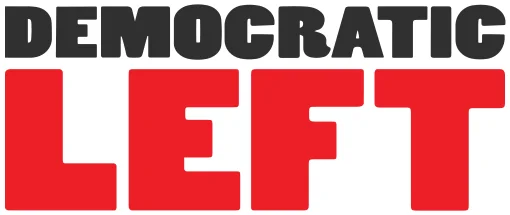

How to Survive as a Teen Under Trump
A member of the National Political Committee shares lessons learned from growing up in a political crisis.
The post How to Survive as a Teen Under Trump appeared first on Democratic Left.

